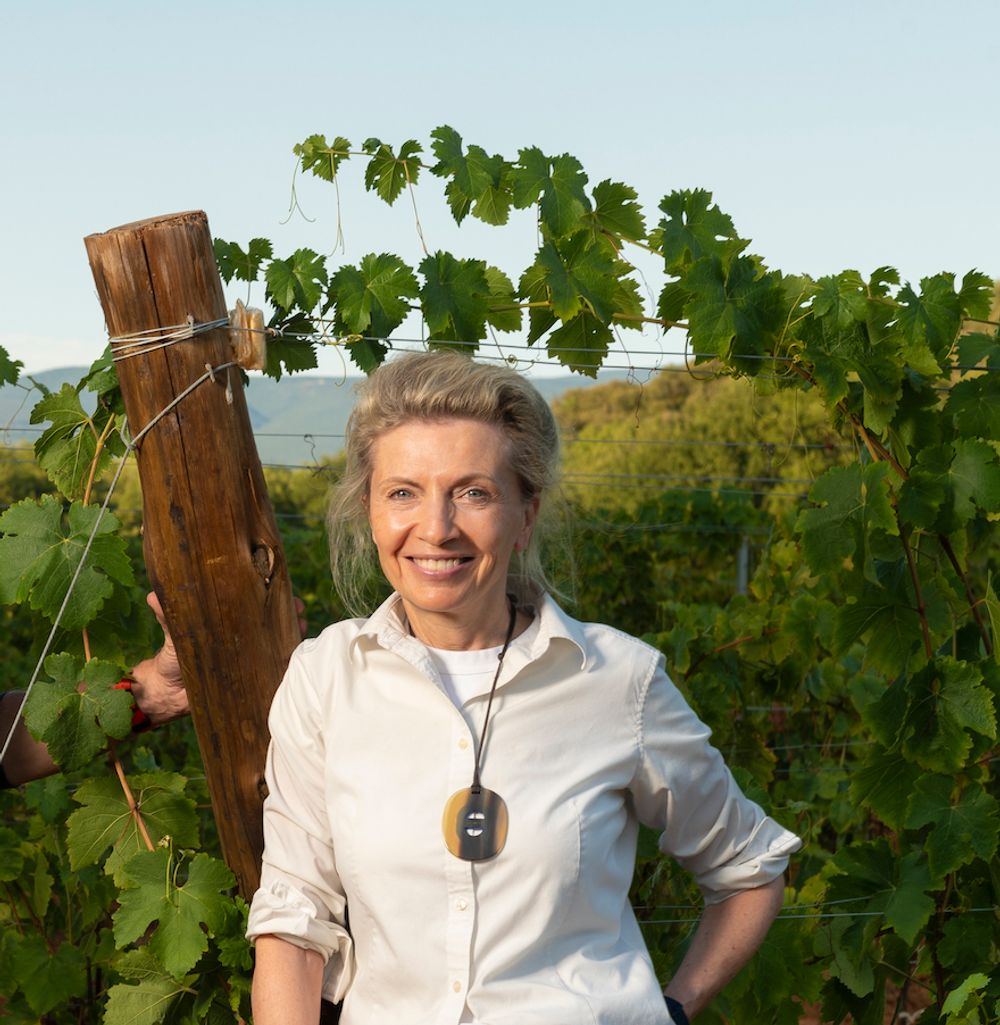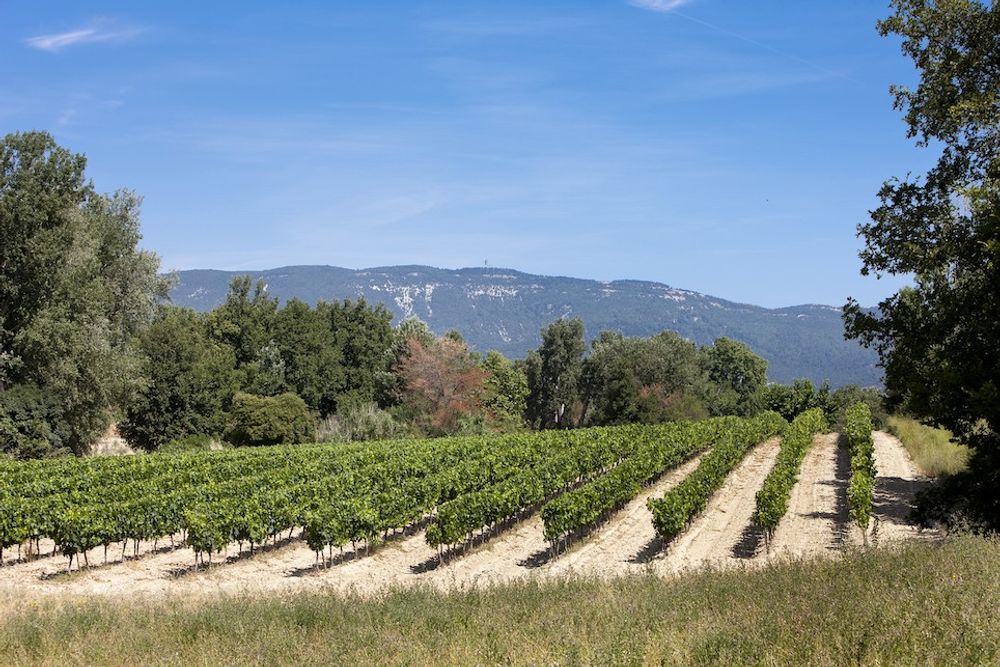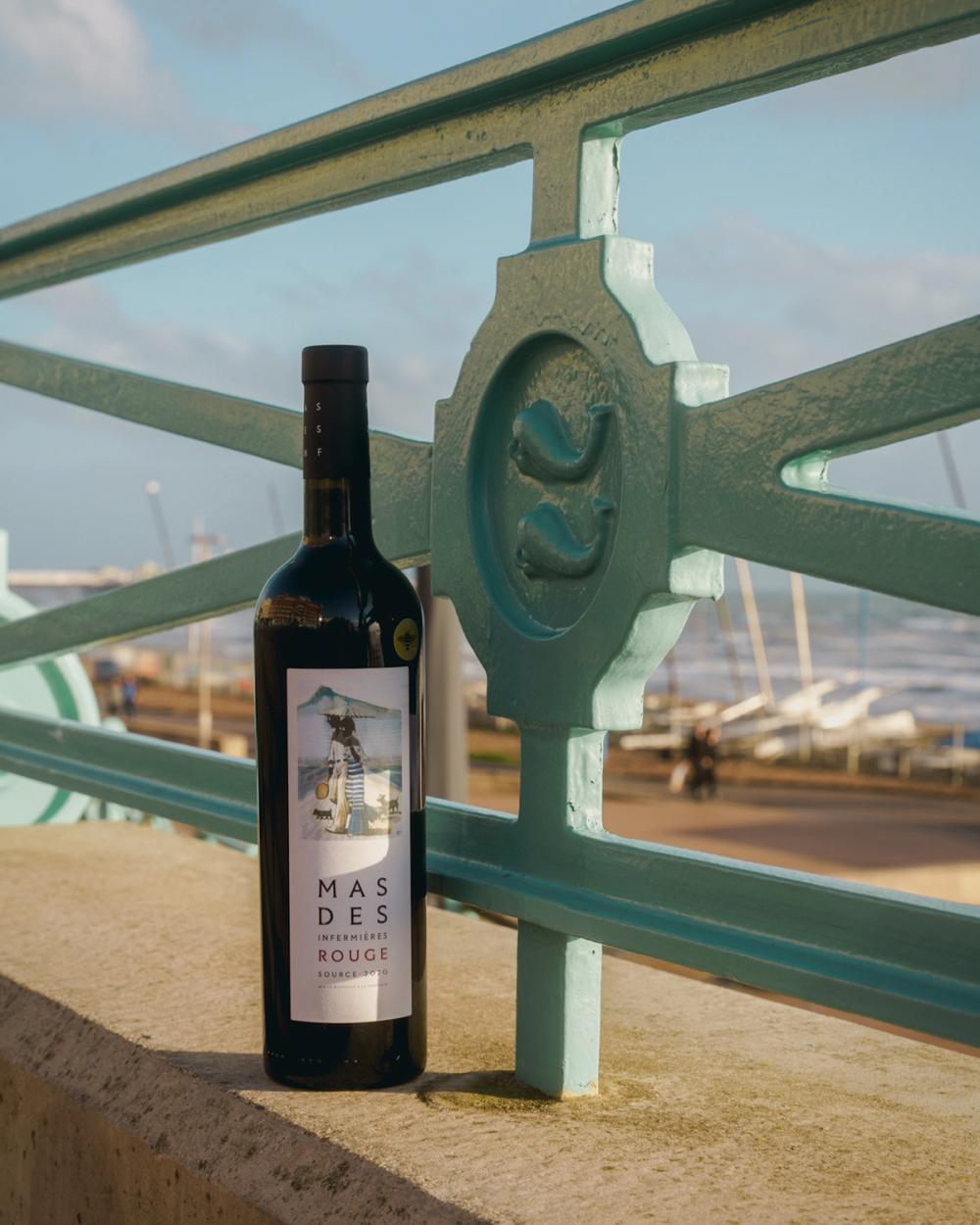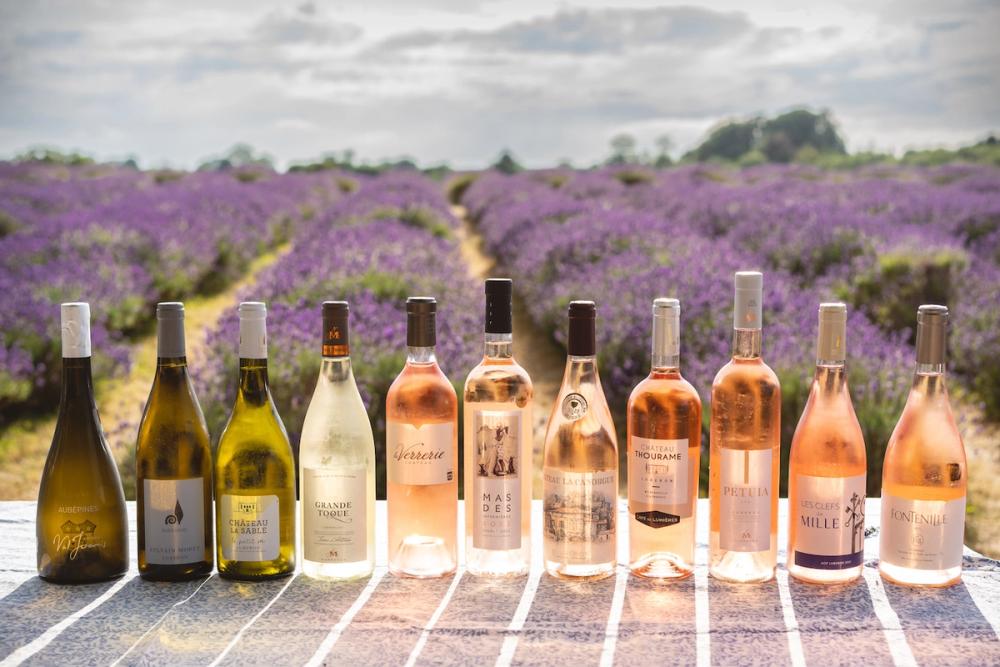As well as focusing on what makes the Luberon wines unique, Sophia Longhi picks 18 she thinks can work on premium wine lists.

The Luberon is dominated by a mountain range that splits the region in two © Robin Boot
The Luberon appellation is unique. Located between the southern Rhône Valley and Provence (Ventoux and Coteaux d’Aix-en-Provence, specifically), the entire appellation exists within the Parc Naturel Régional du Luberon, a government-protected rural area of outstanding natural beauty.
Listed as an UNESCO World Heritage Site since 2010, the park is home to a wealth of biodiversity and has been designated a ‘living example’ of sustainable development. Thanks to the special polyculture that has been nurtured in the park, there are 14 different AOP and IGP products, including cherries, olive oil, cheese, honey and lamb; a smorgasbord of the healthy Mediterranean diet, which, of course, wouldn’t be complete without the daily glass of wine.
In this literal land of milk and honey, isn’t Luberon a winegrower’s paradise?

Constance Slaughter, president of Château de Mille, believes Luberon is in the “ideal location”
Constance Slaughter, president at Luberon estate Château de Mille, certainly gives this impression. “Luberon has an ideal location,” Slaughter emphasises. “We have a fantastic terroir; it’s north-facing, we have altitude, we have a very unusual amplitude between the temperatures during the night and the day. There’s easily 20°C degrees of difference, with very cold nights, which is great for the vines.”
The landscape is dominated by the majestic Luberon Massif, a limestone mountain range, which is covered in wild, resinous herbs. Vines grow at 200 to 500 metres above sea level under intense sunshine. The skies above Luberon are some of the clearest in France, due to the Mistral wind, chasing away the clouds. When the temperature drops sharply at night, the vines cool and the grapes are able to retain their acidity and prominent aromatics.
The logic of converting to Organic
In line with the values of the park, it is becoming more pertinent for Luberon winemakers to use eco-friendly and organic techniques to protect their treasured environment. As Vincent Pâteux from Château la Verrerie, says: “The vineyard lives, breathes and moves”.
At Château de Mille, it was an easy decision for Slaughter and her team to start the conversion to organic viticulture when they took over the estate in 2018. “Converting to organic was such an obvious choice – we didn’t even question it,” recalls Slaughter. “It was important to help recreate an ecosystem in this really beautiful space.”
In such agreeable conditions for winemaking, why haven’t more wine lovers heard of Luberon and, more importantly, why aren’t more of us drinking the wines?
Luberon has certainly been overshadowed by the more famous appellations in the Rhône at one end of it and the charms of Provence at the other. “It’s been underrated for years,” says Slaughter.
A great advantage is that Luberon has the best of both worlds. It shares a culture with Provence; the Mediterranean lifestyle, the food, the landscape and the climate. Like Provence, rosé wine is queen, and accounts for over half of the total production. But, like the rest of the Rhône, there’s a wide range of grape varieties available with which to create nuanced, harmonious blends. Across 3,335 hectares in 36 villages, winemakers can choose from Grenache, Syrah, Mourvèdre, Carignan and Cinsault to make red wines and Grenache Blanc, Roussanne, Marsanne, Bourboulenc, Clairette, Vermentino and Viognier to create white wines.

The Luberon makes quality wines across white, red and rosé © Christophe Grilhé
What can we expect from Luberon wines?
Mountain freshness is a common thread that runs through Luberon wines, as well as vibrant fruit, intense aromatics and distinctive notes of garrigue. The limestone-laced minerality is a special quality that Luberon winemakers aim to preserve in the wines, and fermentation in concrete eggs is said to enhance this characteristic. White wines, which account for 23% of production, are often light-bodied and citrusy, making fantastic aperitifs.
The Barraban Blanc from Bastide du Claux, a blend of six different grape varieties, is a great example. Grenache Blanc, Vermentino, Clairette, Ugni Blanc, Rousanne and Marsanne work together to create a perfumed wine, with floral aromatics (white blossom, honeysuckle), mingled with orchard fruits, some orange and lemon zest, peach and a little honey. The mineral element is also present, with a note of wet pebbles. On the palate, it’s bright, fresh and crisp, but beautifully textured from a short time in French oak and then lees ageing. Typical of these modern Luberon whites, it has a little weight and roundness to it, but it is still light and refreshing. This wine is a great aperitif, with some nibbles, light dishes, salads and seafood.
Rosé wines come in an array of colours, which range from delicate pale pink to bright fuchsia. These wines typically have lots of red berry fruit, citrus and stone fruit, with a touch of spice. Some are more complex and gastronomic, like the Château La Canorgue. This is a robust rosé with lots going on: the vines are between 40 and 100 years old on this estate, which produce rich and concentrated berries. La Verrerie, also organic, is light and elegant in contrast – a very stylish rosé.

The Luberon is focused on producing quality wines rather than quantity © Jack Rowan
Reds, which are also 23% of the total Luberon production, are full-bodied and expressive, with concentrated berry fruit. Mas des Infermieres Rouge is a contemporary example with spice-sprinkled black and red berry fruits, and soft, rounded tannins.
Luberon isn’t a new wine region: it has a 1,000-year-old tradition of winemaking. But perhaps, with its core values of sustainability and biodiversity, teamed with approachable, versatile and accomplished wines, it’s now Luberon’s time to shine.
“I think we’re in a great position,” says Slaughter, reflecting on today’s winemaking activity in the appellation. “There’s a general drive to quality, which is very impressive.” The diversity of people and winemakers in Luberon, who bring energy and dynamism to the area, is a huge asset to the appellation. “We talk, we work together with all the other winemakers – it’s a really great group.”
So, past the rolled pebbles of the Rhône Valley and before the beaches of Provence, look to the lavender-scented mountains of Luberon and stay a while. You just might like what you find.
Wines to discover from Luberon:

A selection of the whites and rosés coming out of Luberon © Robin Boot
Bastide du Claux, Barraban, Blanc, 2020
Château la Canorgue, Rosé, 2021
Château la Canorgue, Blanc, 2021
Château Val Joanis, Aubepines, Blanc, 2020
Marrenon, Petula, AOC Luberon, Rosé, 2020
Marrenon Vignobles en Luberon et Ventoux, Grande Toque, AOC Luberon, Blanc, 2020
Marrenon, Doria, Blanc, 2019
Cave de Lumieres, Chateau Thourame, Rosé, 2021
Château la Verrerie, Rosé, 2021
Mas des Infermieres, Rosé, 2021
Mas des Infermieres, Rouge, 2020
Château de Mille, Les Clefs de Mille, Rosé, 2021
Château la Sable, Le petit M, Blanc, 2020
Domaine de Fontenille, Rosé, 2021
Château Val Joanis, Griottes, Rouge, 2018
Bastide du Claux, L’Odalisque, Rouge, 2019
Domaine le Novi, Les Soucas, Blanc, 2018
Château la Verrerie, Grand Deffand, Rouge 2017
- The Buyer recently partnered with Wines of Luberon to host a Restaurant Tour to take leading buyers, merchants, importers and sommeliers around three restaurants – M Victoria, Gaucho Piccadilly and Bancone – to see how the wines paired up to different styles of food. The report will be on the site next month.
- You can find out more about Luberon at www.vines-luberon.fr.









































